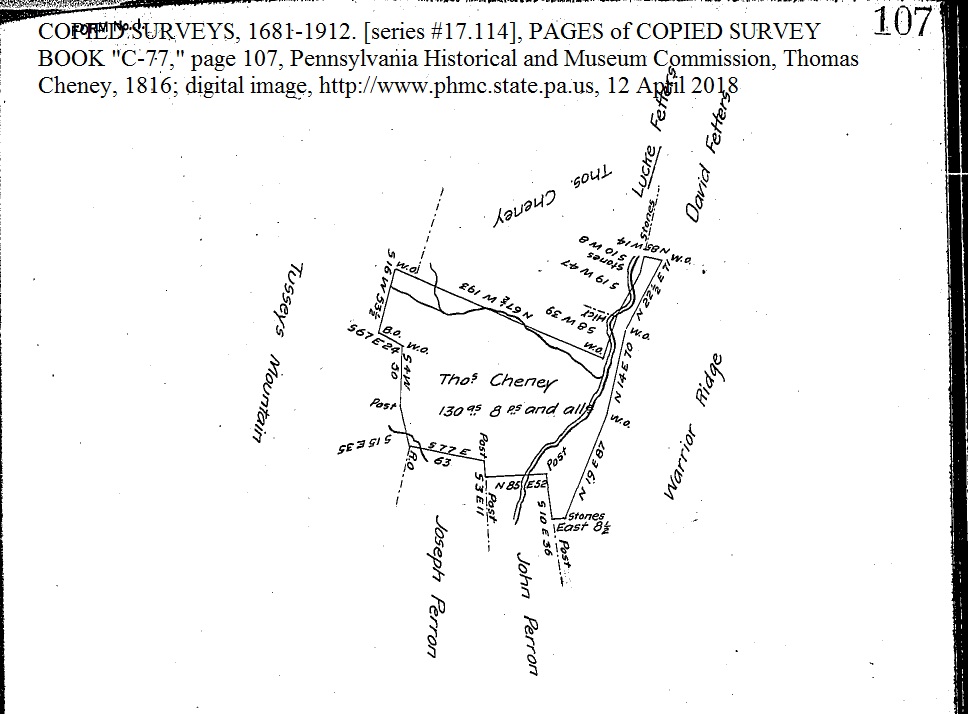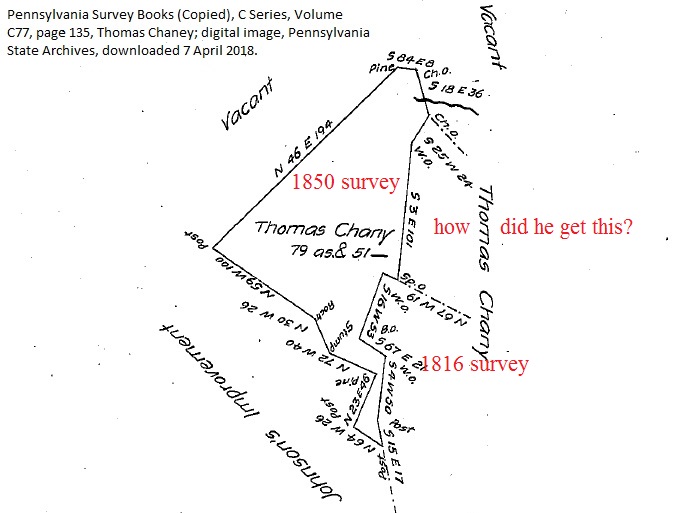This is an excellent example where understanding the records being accessed and crafting an accurate citation is imperative. That citation should be more detailed than just “an image on a website from Pennsylvania.” The citation should not just be created because someone said “citations are important.” It should be created so that you know what you actually have (in addition to other reasons). That’s because sometimes there are other records that were generated as a part of the process that generated the specific record that’s been located.
You want to access those other records because they could provide additional information.
That’s important for this second image of a land survey for Thomas Chaney in Bedford County, Pennsylvania.
For land acquisitions from the Commonwealth of Pennsylvania there is not just one document. There could be:
- application–a request for warrant
- a warrant–an order to make a survey
- a survey–the specific description of the property using metes and bounds
- a patent–the document transferring property title to the applicant
Remember that land acquisitions from the commonwealth are different from transfers where the grantors and grantees are private citizens. Transfers between private citizens usually consist of a deed–although sometimes surveys may be recorded if there are “issues” with the legal description of the property.
This is the second survey I located for Thomas Chaney in Southampton Township, Bedford County, Pennsylvania.


I need to get the other documents that were created as a part of this acquisition process.
I also need to see what I’m missing. When I compare this survey to the one for the 1850 property, it’s clear that Thomas owns more land–a piece that is to the east of the 1850 survey and to the north of the 1816 survey. All three parcels share borders.

This is why it is important to keep comparing what has just been located to what has already been located. If I can’t find this parcel as a survey and patent–then Thomas must have acquired the property in another way. Determining how he acquired the property is important. Thomas is supposed to have settled in Bedford County, Pennsylvania, in 1786. A few things I need to keep in mind:
- When was Thomas approximately born? He can’t purchase property before he becomes of legal age.
- Did Thomas purchase this property? If so was it a purchase from a private individual or from the Commonwealth of Pennsylvania?
- Did Thomas inherit this property? If that’s the case, there may be no deed transfer in the records.
- When was Bedford County formed? If the county formation date was after the property was acquired, the records of acquisition should be recorded in the parent county.
Several things to think about.
Pennsylvania Land Records: A History and Guide for Research by Donna Bingham Munger is an excellent reference.

No responses yet